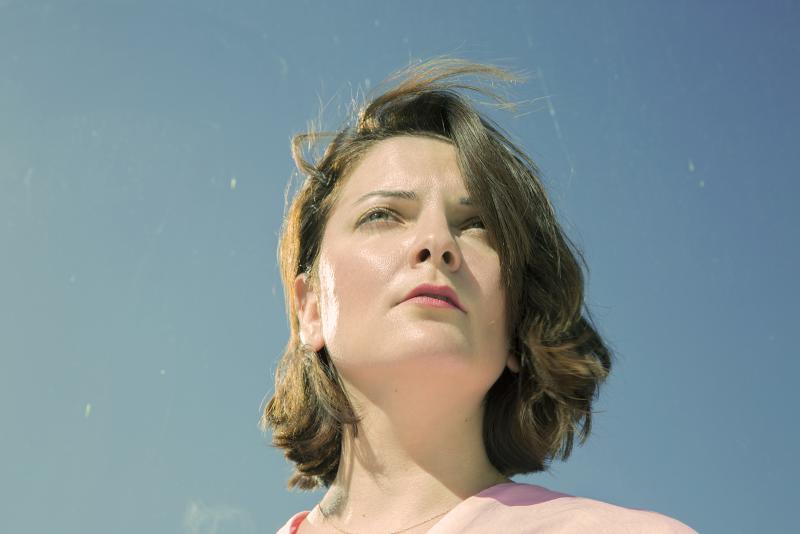R.A.W: Eliza Alexandropoulou
27 Sep 2019 // R.A.W
Above: Eliza’s portrait by Efi Gousi
The extent of the lighting industry is relatively acknowledged, in fact while in recent years the word Lighting Designer has been defined, it is hard to say it is yet fully incorporated in the new economy world. One possible key alignment factor is the expansion and overflowing of established divisions: reaching out to other shores of knowledge within the vast landscape of Light.
This is what I believe Eliza Alexandropoulou did. She is a graduate from the Drama Department of the Faculty of Fine Arts at the University of Thessaloniki. Her innovative approach in set design was awarded the 1st UNESCO Prize for the Promotion of the Arts in the 2007 Prague Quadrennial exhibition.

“Titans”, performance by Euripides Laskaridis (lighting design: E. Alexandropoulou)

“LUCY, Tutorial for a Ritual”, performance by Aris Papadopoulos and Martha Pasakopoulou (lighting design: E. Alexandropoulou)
Her talent doesn’t rely on an strong academic background only, but also on her ability to explore. Whilst she has often ruptured the stage box with non-conventional aesthetic suggestions, she has made a conscious decision that her designs do not need to stay within the theatre walls and has looked at the urban environment as the best canvas to play with light. Infiltrating this area of work meant having to face new goals and to tune back hierarchies. While in the theatre, the goal is to reveal or to hide gestures and movements, in the city, the light interacts with the public as a reflection of the inhabitant’s culture and habits.
The group BEFORELIGHT (formed by Eliza together with Cristina Ampatzidou, Konstantina Evaggelou, Kelly Efraimidou, Dimitris Theocharoudis, Maria Lazaridou, Vasileios Ntovros and Eirini Steirou) launched the project Urban Lightscapes in order to experiment with light. The idea of the aseptic usage of the exterior lighting and its detachment from the overall citizens’ well-being, highlighted the feeling of safety, joy and amusement, as fundamental rights of the inhabitants of every city.


“Mosaic”, Light Installation by BEFORELIGHT
From Greece to The Netherlands and through a symposium, a workshop and two light installations, this project has established a open and cross-disciplined dialogue that considers our use of light in wider terms. The importance of communicating between disciplines could be beneficial to both the development of technology, the infinite potential of light and those that radiate it.
In 2013 a new receptor on the retina was found and, despite its inability of processing and photo information, it created a fundamental benchmark for the studies of the relationship between light stimuli, mood and behaviour. When a lighting designer polishes her skills, extends them with the help of a team and questions the extent that we are really giving the maximum to our profession, in that moment we are looking at a R.A.W. designer.
R.A.W. Blogger
Martina Frattura

